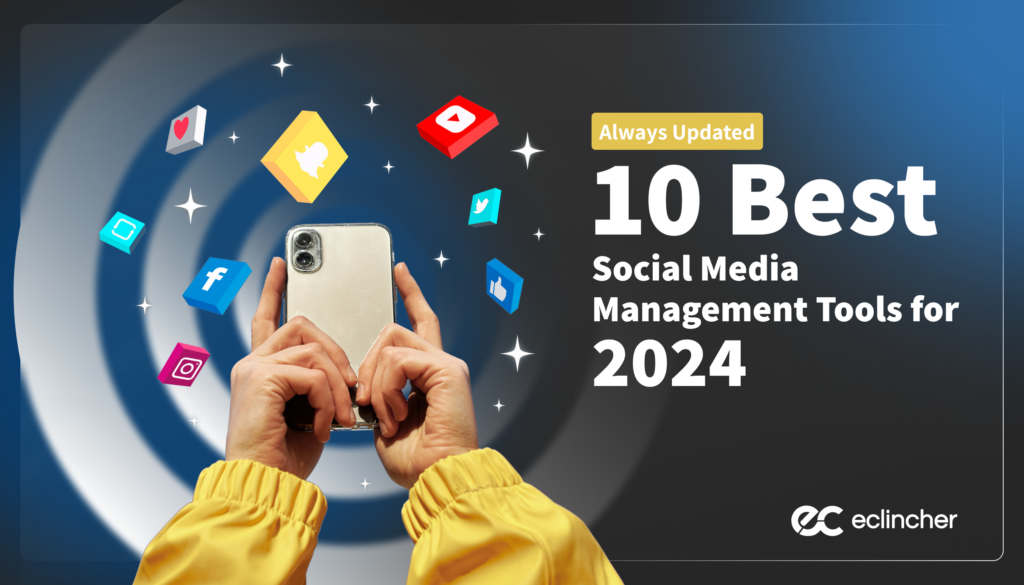Reaching out and forging new relationships is critical to any business. It might seem easier to do in person. But, how do you effectively manage your digital presence online if you’re a small business?
With more than three billion people active on social media and growing, these platforms are great for building brand recognition and establishing your digital presence. But, businesses often stress the challenges social media poses to their small teams. Businesses that take on social media have a unique opportunity.
However, are they active on all relevant social media channels like Facebook, Twitter, LinkedIn, YouTube, TikTok, Pinterest, or Instagram?
Is their social media presence thriving?
Are they laser-focused on KPIs, growth, and goals?
Does everyone on the team understand the mission?
You can’t expect to dominate your digital presence by posting random links and mentioning a name or two every once in a while. Your digital footprint requires a practical and functioning social media marketing strategy – even if your digital marketing strategy budget hangs on a shoestring.
Take a look at our realistic tips to build and manage your online presence.
How to Manage Your Social Media Presence as a Small Business
Define Your Audience
It all begins by defining your audience. Who are you talking to? Who needs to notice you? Why does your audience care? You need to know your target market intimately in order to meet your strategic digital marketing goals.
Maybe you are trying to reach industry influencers and thought leaders. Maybe you’re seeking to add value to other businesses? Perhaps it’s your prospective client or customer pool and you want to reduce friction for the customer service experience.
Break down your audience, so that you can determine:
- Your brand’s voice.
- Where to be active.
- When to be active.
- What social channels make sense for your business.
- The information in your online profiles.
- The type of content you want to post.
- Your content posting schedule.
Study your audience, what they want, and what kind of problems they face. Are you the business that can solve them? How? How can social media support that effort?
Focus on not what your product or service is, but what it can do for your customer and you will be a step ahead. It will also help you interpret how your online presence can stand out from the rest.
If you are struggling with where to start, try and learn about your specific niche through data you retrieve from Google Analytics. Before you can build the roof, you need a solid foundation. Make sure your business is set up correctly on Google My Business.
Establish a Strategy to Manage Your Online Presence
When you know what you want to achieve and with whom, you need to make a plan and then execute. Companies, especially small businesses fail when they don’t follow through and follow up. If you have a team, delegate the key player on your team to own the initiative. Be precise with their responsibility and goals. Tie their goals to the company’s goals.
Create a social media calendar and decide on your posting frequency. Add value with the content you will create and then don’t waver on consistency. The content calendar should lay out who your target audience is and what topics they are interested in. Also, your social media plan should present what kind of content you need to create or curate as well as your existing content.
And you need to have a plan for content creation. The engagement and online presence depend on the needs and interests of your target audience. It’s what determines the type of material you should be publishing or sharing. But to have and manage a strong online presence, you need a plan that you can stick to. Regardless of who your audience is, it would be best if you always aimed to post relevant and high-quality content and optimize images, videos, and other visuals.
Engage With Your Audience
Content is valuable, but it’s not enough to only publish it. The Internet (and social media specifically) is all about relationships. It’s about engagement and connection. If you want to maintain and manage your presence, you need to foster your relationships. To achieve an online presence effectively, you need to:
- Start and participate in conversations.
- Comment on posts.
- Share user-generated content.
- Share relevant information.
- Show appreciation for your followers and customers.
- Address criticisms and complaints.
- Ask and answer questions.
- Infuse personality in your brand.
It’s a significant factor that can make or break you. If you’re coming off as a faceless company without any personality, you won’t manage to maximize engagement. Talk to your audience like they are your friends. But more importantly, talk and respond.
If you leave their questions unanswered, they will perceive that you’re not interested in them. You need to establish a brand personality presence because if you act like a robot, you won’t meet today’s consumers’ expectations.
Schedule Your Posts
To successfully manage your web presence as a small business, you need to invest time and dedication. However, some repetitive and tedious tasks can be automated. With the right tools, you can schedule and automatically post content up to a month in advance or more. Tools such as eclincher allow you to schedule entire batches of posts. Also, they make it easier for you to respond to messages and comments in real-time.
Be Active
You need to be online every day, posting fresh content. There’s no way you can maintain your online presence without consistency. Establish a solid content creation strategy. If you can’t manage to keep up creating, you can always curate some content.
Pick and prioritize your social networks. Repurpose your existing content. All these things can help you save time and energy. And you don’t have to be present all the time, but check your online channels a few times per day. Take 10-15 minutes to post or respond to new comments when most of your audience is online.
Optimize for Local Search
Since the rise of mobile use, “near me” searches have dramatically increased. 30% of all mobile searches are location-related.
That’s why you need to optimize for local search to maintain the presence of your small business in local searches. You can start with business directories that matter the most, such as Google My Business and Yelp. Next, find directories and indexes that are relevant to your niche.
Also, don’t forget about YouTube. After Google, it’s the second-largest search engine. Add geotagging to your videos and keywords in the video title. That way, search engines will begin to associate your physical store location with the needs of potential customers.
Use Both Organic and Paid Advertising
There’s no reason for you not to consider using paid ads. You’re already doing so much organically, so if your efforts are not noticed, then you should give them a boost. Besides, you only need a few dollars to get hundreds of impressions. To manage your small business’s online presence across various social accounts, you need to:
- Share relevant content (including hashtags and keywords in your posts).
- Add keywords to your social media profile (but avoid keyword stuffing).
- Connect with popular accounts to increase your exposure.
And here too, eclincher can help. We’re a powerful social media management tool that can satisfy all your social media needs. Finding relevant content according to specific hashtags, keywords, and search terms? Advanced social media analytics? Scheduling and publishing posts? Managing all your social media interactions with one inbox?
eclincher is a tool that integrates all these features into one easy-to-use dashboard.
It takes time to cultivate and manage an engaging online presence. With the right strategies that are refreshed and the right automation tools, it can be done. However, even with the most advanced tools, it requires your attention and some of your time.
To maximize your digital efforts, optimize your website, blog, and social media profiles. Engage in two-way communication with your customers. Like, comment on, and reply to their messages and criticisms. The potential of your brand being a powerful digital advocate for your customers is in your hands. All you need to do is invest some time and find the most effective resources, no matter the size of your business.






